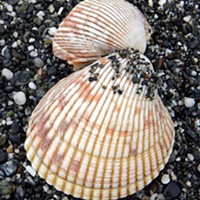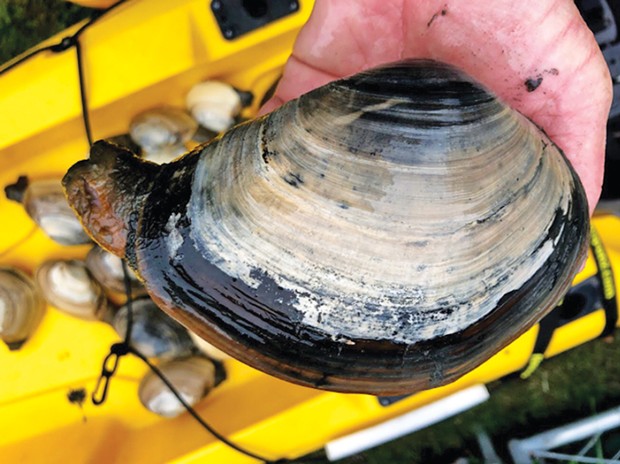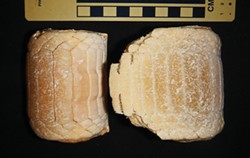[
{
"name": "Top Stories Video Pair",
"insertPoint": "7",
"component": "17087298",
"parentWrapperClass": "fdn-ads-inline-content-block",
"requiredCountToDisplay": "1"
}
]
I said, "Get outta my way, old man. I don't need your rules. That's why I'm running past your NO RUNNING sign and diving next to your NO DIVING sign. I'm a rebel and I don't need you, old man."
At the instant my head hit the bottom of the pool, my consciousness transferred into the newly fertilized embryo of a fat gaper clam (Tresus capax). After a couple of days of cell division, I became a swimming veliger larva with a basic clam-like shape.
I enjoyed swimming around and riding the currents as a veliger. It didn't occur to me that I may be eaten by any number of animals, including my own species. But I could finally move around without some old man oppressing me.
After about a month, I metamorphosed into a proper clam with a bi-valved shell, a siphon and a muscular digging foot. I settled near the tide's lowest water and dug into the sandy mud near some eelgrass. I was only about 1/100 of an inch long, so I existed just under the surface at first, and dug deeper as I grew.
I tracked the passing years by the annual changeover to winter conditions. And after I reached sexual maturity at 4 years old and about 3 inches long, this seasonal change became more important. That's because colder water with lower salinity triggers our sexual reproduction. We "do it" from about January to April.
Male and female fat gaper clams simply release our gametes (male and female sex cells) through our siphons to mix freely in the water. The technical term for this coordinated reproductive event is not "clamgasm" (yet). Plus, with densities of up to 24 of us per square meter in Humboldt Bay, I have dozens of girlfriends at a time! Which is better than I did as a human — like, you know, way better than zero.
Some people call us "horse clams" because supposedly our siphons resemble a horse's neck. But I think those people are looking at the wrong end of the horse. Either way, we have "gaper" in our name because our siphon is so large that the shells flare apart to accommodate it. And we can't fully withdraw the siphon into our shells like most clams.
This flare can be seen on washed-up shells. Oftentimes, the two shell halves are still attached even though the middle of each half is crushed — presumably by the hard plates in the mouth of a bat ray.
You might think that being buried more than a foot deep in mud would be boring. But I had great fun sticking my siphon to the surface and filtering water for food. Each particle — whether it be fish poo, random detritus, phytoplankton or a speck of crab meat — is super yummy. Happy as a clam, as they say.
Fat gaper clams are also popular human food. And when I was about 6 inches long and 15 years old, some old man accidentally harvested one clam over his limit and he just left me stranded on top of the mud. Adult fat gaper clams cannot dig themselves back in, so on the next high tide, a big bat ray got me. Just as I felt the compression from its mouth plates, my consciousness transferred back into my human body.
No, there wasn't a tunnel of light or any of that old man BS. I just came back to life on the pool deck looking up at a wet old man giving me chest compressions.
I said, "I'm a fat gaper clam, old man, and I don't need your .... Oh, never mind."
Biologist Mike Kelly (he/him) is also the author of the book Tigerfish: Traditional and Sport Fishing on the Niger River, Mali, West Africa. It's available at Amazon or everywhere e-books are sold.
Speaking of Clams, Gaper Clams
-

Nuttall's Cockle Fight
Mar 31, 2022 - More »
more from the author
-
Hot Tomcod Action
- Apr 18, 2024
-
Wandering Meatloaf
- Mar 7, 2024
-
Sea Palm Crime
- Jan 11, 2024
- More »

































